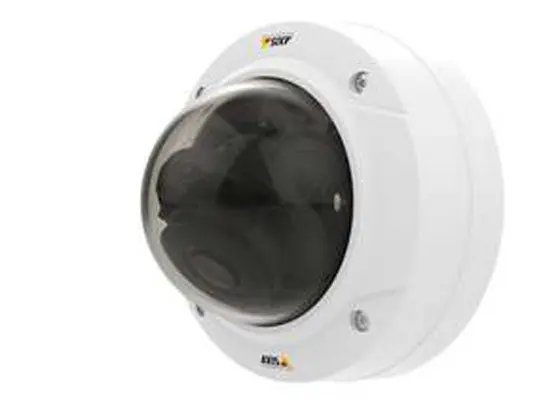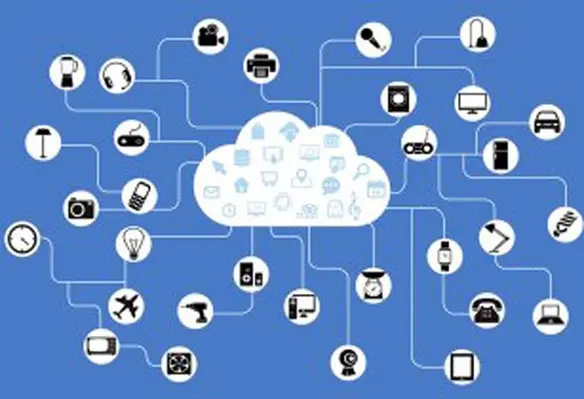Security
Security
- Details
- Louise Waters
- Security
- Topic: Security
- Date: 11 July, 2017
- Year: 2017
Axis Communications, the global leader in the network video market, has appointed Tertius Wolfaardt as business development manager, A&E (Architects & Engineers) for Middle East & Africa
- Details
- Deblina Roy
- Security
- Topic: Security
- Date: 11 July, 2017
- Year: 2017
Reflex Marine, offshore personnel and cargo transfer solution provider, observed that the increasing number of vessels in the Middle East and expansion in offshore activities have encouraged companies in the region to review their crew transfer options in order to make a decisive move towards marine transfer
- Details
- Kestell Duxbury
- Security
- Topic: Security
- Date: 6 July, 2017
- Year: 2017
Carbon Black has announced that Cb Defense, the company’s next-generation antivirus (NGAV) solution, has been recognised with an overall five-star rating by SC Media, the highest possible rating
- Details
- Louise Waters
- Security
- Topic: Security
- Date: 22 June, 2017
- Year: 2017
Axis Communications, a leader in network video, is showcasing high resolution network cameras featuring its new Forensic WDR (Wide Dynamic Range) technology at the IFSEC International exhibition, which takes place from 20-22 June at London ExCeL
Axis is has brought its new Forensic WDR technology to several new network cameras, enhancing the ability to capture detail in challenging light conditions and allowing surveillance operators to see forensic levels of detail in both dark and bright areas at the same time. In addition, Forensic WDR enables this ability both for high-resolution cameras and for surveillance areas with high levels of motion in a unique way.
“Forensic WDR pushes the borders and even allows for multi-megapixel cameras to reveal the details in scenes with difficult light conditions,” said Petra Bennermark, global product manager, Axis Communications. “With our new wide range of fixed domes offering from 5-megapixel resolution up to 4K, we make this technology available for both customers with limited means and for applications exposed to the harshest conditions.”
Axis cameras featuring Forensic WDR include new additions to the AXIS P32 and AXIS Q35 Series of network cameras. The new AXIS P32 models (AXIS P3227-LV, AXIS P3228-LV, AXIS P3227-LVE and AXIS P3228-LVE) fixed domes deliver outstanding video performance with multi-megapixel resolution in full frame rate up to 4K, featuring Forensic WDR, OptimizedIR and Zipstream, says Axis.
The new AXIS Q35 cameras (AXIS Q3517-LV and AXIS Q3517-LVE) offer electronic image stabilisation and IK10+ rating, making them ideal for harsh environments. They address the need for monitoring in multi-megapixel detail at full frame rate, offering Forensic WDR, Lightfinder, OptimizedIR and Zipstream.
Also showcased at IFSEC are AXIS M3047-P and AXIS M3048-P network cameras, which benefit from the company’s enhanced Zipstream compression technology to deliver 360-degree coverage in a cost-effective way. The enhancements support the increased data streaming and storage demands of 360-degree panoramic cameras and 4K resolution. Zipstream ensures that important forensic details of video footage are maintained, while minimising bandwidth and storage requirements by an average of 50 per cent or more.
The compact fixed mini dome ‘fisheye’ cameras AXIS M3047-P, with a 6-megapixel sensor, and AXIS M3048-P, with a 12-megapixel sensor, both deliver full frame rate video and excellent image quality, says the company.
“Combining these new 360-degree domes with the enhanced Zipstream technology really does deliver a cost-effective solution for customers, providing comprehensive coverage while ensuring the detail of that panoramic view is not lost when streaming and storing data,” said Bennermark.
- Details
- Kestell Duxbury
- Security
- Topic: Security
- Date: 21 June, 2017
- Year: 2017
A new update to the International Data Corporation (IDC) Worldwide Semiannual Internet of Things Spending Guide forecasts worldwide spending on the Internet of Things (IoT) to grow 16.7 per cent year over year in 2017, reaching just over US$800bn
By 2021, global IoT spending is expected to total nearly US$1.4 trillion as organisations continue to invest in the hardware, software, services, and connectivity that enable the IoT.
The IoT use cases that are expected to attract the largest investments in 2017 include manufacturing operations (US$105bn), freight monitoring (US$50bn), and production asset management (US$45bn). Smart grid technologies for electricity, gas and water and smart building technologies are also forecast to see significant investments this year (US$56bn and US$40bn, respectively). While these use cases will remain the largest areas of IoT spending in 2021, smart home technologies are forecast to experience strong growth (19.8 per cent CAGR) over the five-year forecast. The use cases that will see the fastest spending growth are airport facilities automation (33.4 per cent CAGR), electric vehicle charging (21.1 per cent CAGR), and in-store contextual marketing (20.2 per cent CAGR).
The industries making the largest IoT investments in 2017 are Manufacturing (US$183bn), Transportation (US$85bn), and Utilities (US$66bn). Cross-Industry IoT investments, which represent use cases common to all industries, such as connected vehicles and smart buildings, will be US$86bn in 2017 and rank among the top segments throughout the five-year forecast. Consumer IoT purchases will be the fourth largest market segment in 2017 at US$62bn, but will grow to become the third largest segment in 2021. Meanwhile, The industries that will see the fastest spending growth are Insurance (20.2 per cent CAGR), Consumer (19.4 per cent), and Cross-Industry (17.6 per cent).
From a technology perspective, hardware will be the largest spending category until the last year of the forecast when it will be overtaken by the faster growing services category. Hardware spending will be dominated by modules and sensors that connect end points to networks, while software spending will be similarly dominated by applications software. Services spending will be about evenly split between ongoing and content services and IT and installation services. The fastest growing areas of technology spending are in the software category, where horizontal software and analytics software will have five-year CAGRs of 29.0 per cent and 20.5 per cent, respectively. Security hardware and software will also see increased investment, growing at 15.1 per cent and 16.6 per cent CAGRs, respectively.
"As enterprises are adopting to new and innovative services provided by different vendors a lot of new threats are introduced, so its very important to upgrade existing security systems to ensure that an optimal business outcome can be reached and ROI can be justified," said Ashutosh Bisht, research manager for IT Spending across APeJ.
Manufacturing will be the leading industry for IoT investments in all three regions, followed by Utilities and Transportation in APeJ and Western Europe, and Transportation and Consumer in the United States. Cross-Industry IoT spending will be among the leading categories in all three regions as well. The regions that will experience the fastest growth in IoT spending are Latin America (21.7 per cent CAGR), the Middle East and Africa (21.6 per cent CAGR), and Central and Eastern Europe (21.2 per cent CAGR).
The Worldwide Semiannual Internet of Things Spending Guide forecasts IoT spending for 12 technologies and 54 use cases across 20 vertical industries in eight regions and 52 countries. Unlike any other research in the industry, the comprehensive spending guide was designed to help vendors clearly understand the industry-specific opportunity for IoT technologies today.




